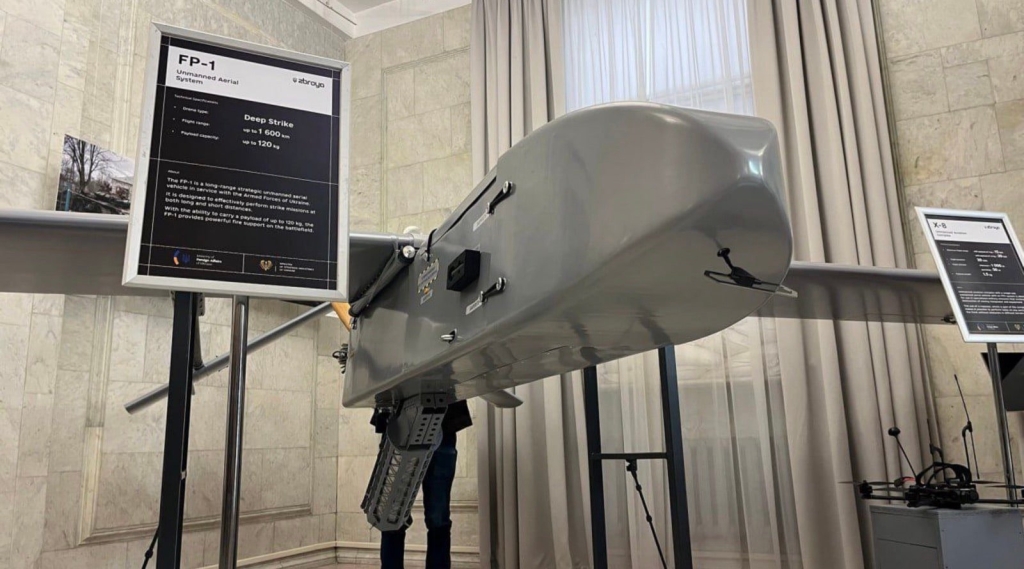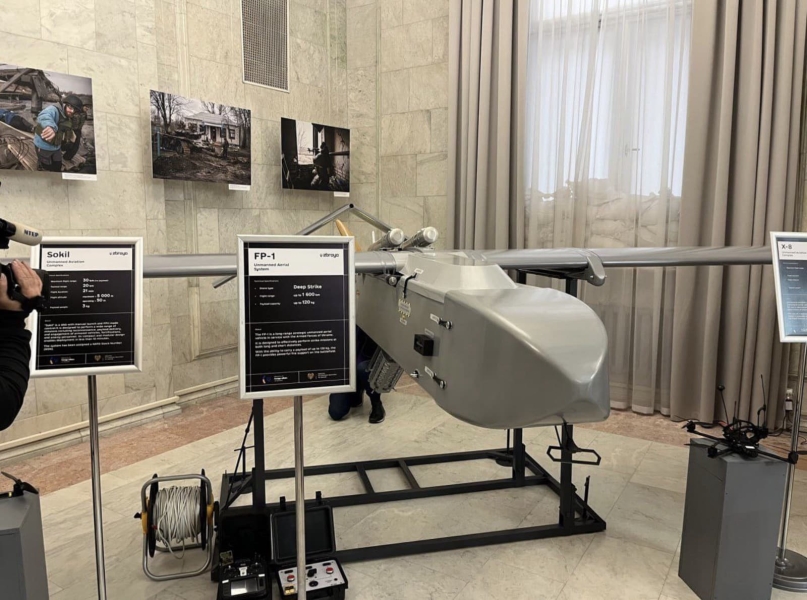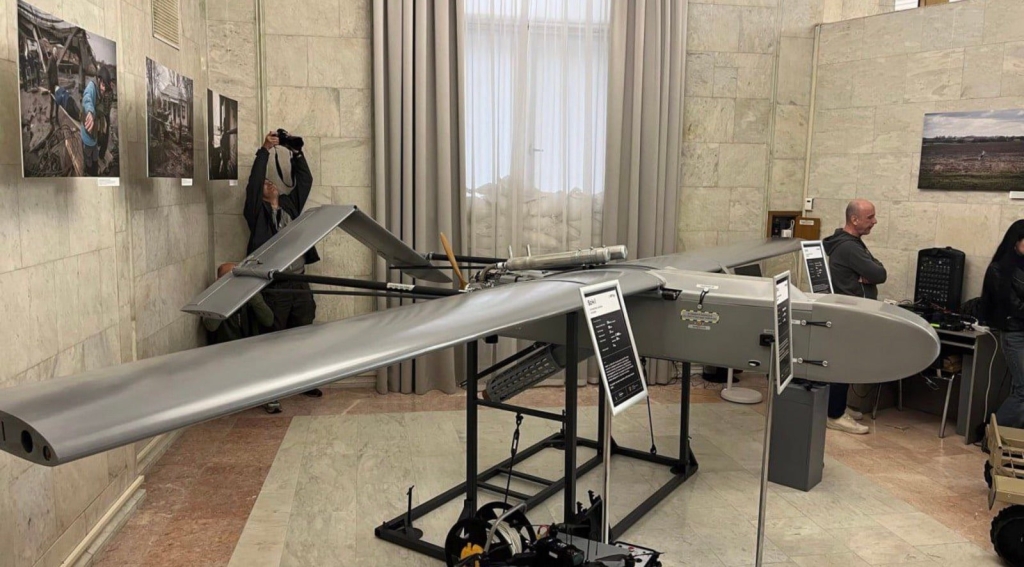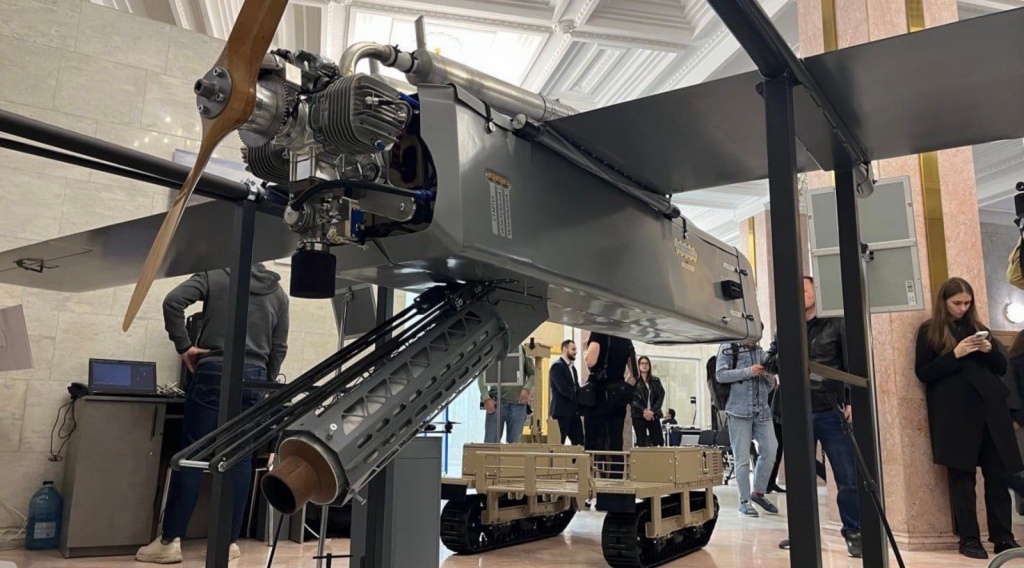From Film Casting To Billion-Dollar Defense: Ukraine’s Fire Point Faces Corruption Probe As Drone Industry Matures

Three years ago, Fire Point was scouting locations for Ukrainian film productions. Today, it’s a $1 billion defense contractor producing long-range strike drones and cruise missiles that are pounding Russian infrastructure. But the company’s meteoric rise has triggered a corruption investigation examining inflated pricing, quality concerns, and alleged ties to President Volodymyr Zelensky’s former television industry colleagues, according to The New York Times.
The investigation by Ukraine‘s National Anti-Corruption Bureau represents one of the most significant known inquiries into the country’s fast-growing drone and missile industry, raising uncomfortable questions about whether battlefield necessity has enabled both innovation and favoritism in Ukrainian defense procurement.

Why This Matters Now
Fire Point’s story encapsulates both the remarkable and the troubling aspects of Ukraine‘s wartime industrial transformation. The company went from zero defense experience to becoming Ukraine’s largest drone contractor faster than any Western defense firm could navigate a single procurement review. That speed delivered desperately needed weapons. But it may have also enabled corner-cutting, inflated pricing, and political favoritism that Ukrainian taxpayers and Western allies are now funding at scale.
As NATO countries pour hundreds of millions into partnerships with Ukrainian drone manufacturers—with the Netherlands committing €200 million ($215 million) and the EU pledging €6 billion ($6.5 billion)—the Fire Point controversy forces a critical question: Are Western allies investing in the most capable Ukrainian manufacturers, or simply the best-connected ones?

The Remarkable Transformation: Casting Agency to Defense Giant
Fire Point’s origin story reads like wartime necessity fiction. When Russia launched its full-scale invasion in February 2022, the business that would become Fire Point was legally registered as a casting agency for film and television productions, according to Ukrainian government documents. Owner Yehor Skalyha ran At Point, a company that scouts film locations. Fire Point’s current chief technology officer, Iryna Terekh, previously operated a business making concrete outdoor furniture.
Yet somehow this team with zero aerospace experience built Ukraine into a long-range strike powerhouse. The company now operates 30 secret production facilities across Ukraine, churning out FP-1 “deep strike” drones capable of flying 1,000 miles (1,600 km) with warheads up to 260 pounds (120 kg). These low-cost platforms—built from Styrofoam, plywood, and carbon fiber intended for racing bicycles—conduct an estimated 60% of Ukraine’s attacks inside Russia, targeting oil refineries and ammunition depots.
Fire Point’s contracts this year total approximately $1 billion, making up roughly 10% of Ukraine’s entire defense procurement budget. The company employs over 500 people and claims production capacity exceeding 100 FP-1 drones daily, though executives acknowledge they don’t sustain that rate between contracts.
The company’s signature weapon, the FP-1, launches with rocket assistance and flies on a two-stroke engine similar to those powering chainsaws. At approximately $58,000 per unit, it can strike targets across much of western Russia—replicating capabilities of cruise missiles costing over $1 million each.

Flamingo Cruise Missile: Game-Changer or Overhyped?
Fire Point’s newest weapon is drawing both praise and scrutiny. The FP-5 Flamingo cruise missile carries a one-ton warhead across ranges up to 1,800 miles (3,000 km), potentially reaching 90% of Russia’s arms manufacturing capacity. Former CIA Director and U.S. Army General David Petraeus called the Flamingo a potential “game changer” if produced in substantial numbers.
“It’s typical Ukrainian ingenuity, where they’ve taken old Soviet bombs, put explosives on the nose of a cruise missile they have designed with a jet engine and guidance system,” Petraeus told Ukrinform. “That will be a game changer. If that can be produced in substantial numbers, that will have an enormous effect on the battlefield in the Russian Federation.”
The missile uses repurposed Soviet-era AI-25 turbofan engines salvaged from L-39 Albatros jet trainers, with titanium components replaced by cheaper alternatives to cut costs. Fire Point claims each missile costs approximately $500,000—a fraction of Western equivalents.
But the weapon’s name origin reveals quality control issues that plague the company. The Flamingo got its name because initial production runs came out pink due to a manufacturing defect. Engineers either painted one prototype pink to aid debris searches after test firing (the official explanation), or made an error that led to jokes about a woman-led defense company producing pink weapons (the unofficial version).
Fire Point currently produces roughly one Flamingo daily, with plans to reach seven per day by late 2025. Ukraine successfully used Flamingo missiles in combat for the first time in August 2025, targeting a Federal Security Service outpost in Crimea.
$1 Billion in Contracts Triggers Corruption Investigation
Fire Point’s rapid ascent has attracted unwanted scrutiny. The Kyiv Independent reported in August 2025 that Ukraine’s National Anti-Corruption Bureau (NABU) launched an investigation examining whether Fire Point inflated component costs, delivery numbers, or both.
The investigation is also probing alleged connections between Fire Point and Timur Mindich, a businessman who co-owns Kvartal 95—the television studio founded by Zelensky before he entered politics. Fire Point emerged from the same Ukrainian film and television industry where Zelensky worked as a comedian. The film scouting company led by Fire Point’s owner was credited with location work for “Eight Best Dates,” a 2016 romantic comedy starring Zelensky.
“Rumors are going around pretty actively that [Fire Point’s] drones are linked with Mindich, and I have every conviction that this version of events corresponds to reality,” an unnamed government source familiar with the investigation told the Kyiv Independent.
Fire Point executives deny the allegations. The company confirmed it’s cooperating with investigators but claims the probe focuses on government officials, not the company itself. Fire Point says Mindich asked to buy stock but the owners declined to sell.
NABU initially declined to comment on the investigation, later issuing a carefully worded statement that it’s not investigating “the Flamingo missile” specifically—a narrow denial that doesn’t address the broader probe into Fire Point’s business practices.
Quality Concerns and Political Connections Raise Questions
A government audit uncovered concerning procurement irregularities. Procurement officers estimated Fire Point’s FP-1 drones could be produced more cheaply than the company’s December 2024 offering price of $58,000 per unit. That assessment should have triggered mandatory price negotiations by Ukraine’s Defense Procurement Agency but didn’t, auditors found. Without negotiations, contracts were awarded for approximately $16.7 million more than the lower-cost production option.
Major Yurii Kasyanov, a former drone unit commander, claims Fire Point won contracts despite design flaws while his own drone—called the Spear—was ignored. “We don’t work with explosives because it’s dangerous for civilians,” one volunteer drone maker explained, but Kasyanov’s Spear reportedly demonstrated superior jamming-proof guidance by exploding two test drones in 2023 yards from the Kremlin flag.
After testifying as a witness in the anticorruption investigation related to Fire Point, Kasyanov says the military disbanded his entire drone unit.
Fire Point’s Terekh dismisses quality concerns, arguing that wartime drone manufacturing should break traditional aircraft standards for the sake of economy and speed.
“Manufacturing drones should be seen as a new industry that breaks quality standards in aircraft manufacturing for the sake of economy,” she said.
The company acknowledges early quality problems but insists they’ve been resolved. Terekh claims current FP-1 drones achieve 55-60% success rates against Russian targets—though this cannot be independently verified given wartime secrecy.
The Broader Context: Ukraine’s Defense Procurement Under Scrutiny
Fire Point’s troubles emerge as Ukraine grapples with the tension between wartime speed and procurement oversight. The country’s defense industry has exploded from seven approved drone models in 2022 to over 67 today, with more than 500 private manufacturers now operating.
Much of Ukraine’s military spending remains cloaked in wartime secrecy, with billions of dollars flowing to domestic arms makers as Kyiv reduces reliance on Western donations. In a country with a documented history of defense procurement corruption, analysts and activists have raised concerns about contract awards and profit destinations.
Ukraine’s Public Anticorruption Council, an independent watchdog, has called for a parliamentary inquiry into Fire Point specifically, citing concerns about both quality and pricing.
The investigation comes amid a broader government crackdown on NABU that many observers view as retaliation for the agency’s scrutiny of Zelensky’s associates. This political context complicates assessing whether the Fire Point probe represents legitimate anticorruption work or political score-settling.
DroneXL’s Take
We’ve been covering Ukraine’s drone revolution since the invasion began, documenting one of the most remarkable industrial transformations in modern warfare. From DIY civilians building FPV drones in their homes to 9,000 drones deployed daily across the front lines, Ukraine has essentially become the world’s largest real-time R&D laboratory for unmanned warfare.
Fire Point’s story embodies both sides of that revolution. On one hand, going from zero aerospace experience to producing weapons that strike 1,000 miles into Russian territory in just three years is genuinely remarkable. That kind of speed is impossible in Western defense procurement systems, where developing new platforms typically requires 5-10 years minimum. Ukraine’s necessity-driven iteration—with frontline operators providing daily feedback directly to manufacturers—has created an innovation cycle that’s lapped the sclerotic bureaucracy of NATO defense contractors.
We’ve documented this extensively. When the Netherlands committed €200 million for joint drone production, when Denmark pioneered channeling frozen Russian assets directly to Ukrainian manufacturers, and when the UK launched Project OCTOPUS to mass-produce Ukrainian interceptor drones, these weren’t charity—they were strategic investments in battle-tested technology. NATO spent decades trying to bring Ukraine up to alliance standards. The brutal reality of daily drone warfare flipped that relationship entirely.
But Fire Point’s corruption allegations force us to ask harder questions: Which Ukrainian manufacturers are succeeding because they’re actually the best, versus which are succeeding because they’re the best-connected? When a company goes from making concrete furniture to becoming a billion-dollar defense contractor in 36 months, that’s either a testament to Ukrainian resilience… or evidence that wartime secrecy enables favoritism at scale. Probably both.
The timing matters too. We’ve covered Ukraine’s production scaling from 200,000 drones monthly to ambitious targets of millions annually, with the EU pledging €6 billion to accelerate expansion. As Western money flows in and Ukrainian companies begin exporting technology globally, getting procurement right becomes crucial not just for Ukrainian taxpayers but for NATO allies betting hundreds of millions on these partnerships.
The uncomfortable truth is that rapid procurement and oversight are natural enemies. Ukraine needed weapons immediately, and Fire Point delivered them. Traditional Western procurement might have prevented potential corruption but would have meant thousands more Ukrainian soldiers dead while committees debated specifications. That’s not a theoretical trade-off—it’s the daily calculus of wartime industrial policy.
What’s the right answer? Probably Denmark’s model: direct funding to Ukrainian manufacturers combined with co-production facilities that provide oversight without strangling speed. And crucially, maintaining aggressive anticorruption efforts even during wartime, because corruption doesn’t just steal money—it gets soldiers killed when inferior weapons fail on the battlefield.
The Fire Point investigation will reveal whether the corruption allegations are substantive or politically motivated. Either way, the case highlights that Ukraine’s drone miracle isn’t a simple success story. It’s a complex, messy, human story of innovation and improvisation happening at wartime speed, where the same conditions that enabled remarkable breakthroughs also created opportunities for corner-cutting and favoritism.
Western allies investing in Ukrainian drone partnerships should watch this closely. The question isn’t whether to work with Ukrainian manufacturers—their battlefield-proven technology and rapid iteration cycles are genuinely years ahead of traditional Western systems. The question is which Ukrainian manufacturers represent the real deal versus which are riding political connections to unearned success.
What do you think? Share your thoughts in the comments below.
